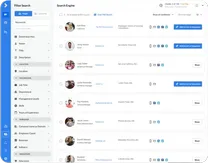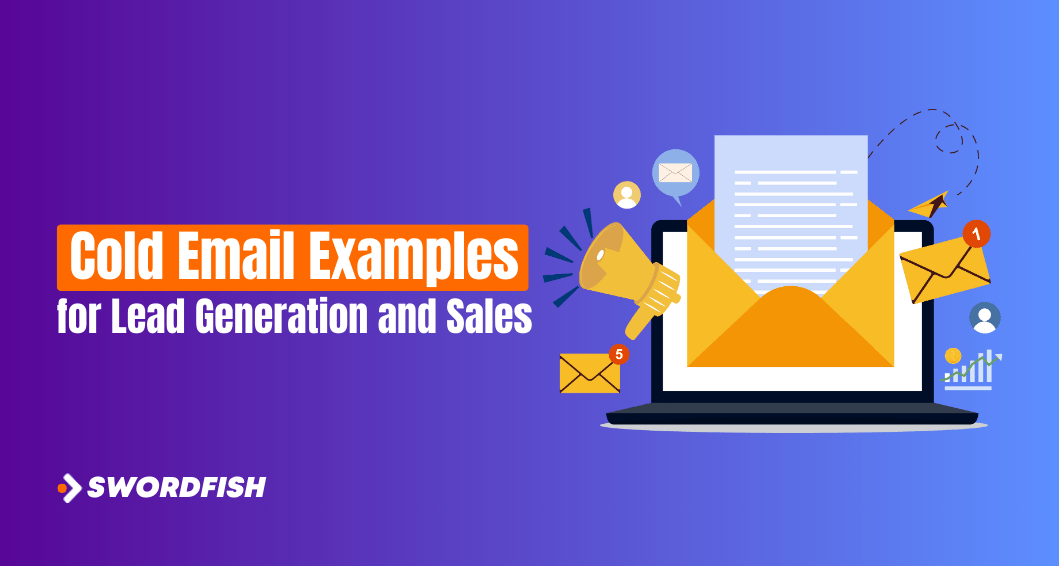
Did you know that 80% of buyers prefer to be contacted by email, according to a study?
With cold emails being such an effective way to reach prospects, it’s crucial to craft compelling messages that grab attention and inspire action.
That’s why I’ve put together 12 powerful cold email templates for B2B sales. Designed to achieve the delicate balance between engaging content and a clear call-to-action, these templates will provide you with proven formulas to connect with leads.
Backed by expert advice on best practices for cold outreach, you’ll learn how to avoid common mistakes and create emails that truly resonate with your audience. Say goodbye to guessing and hello to cold emails that generate results!
In this guide, we’ll dive into real-world examples and equip you with the knowledge to succeed. Let’s get started crafting cold emails that convert.
How to Use Cold Email Example Templates Effectively
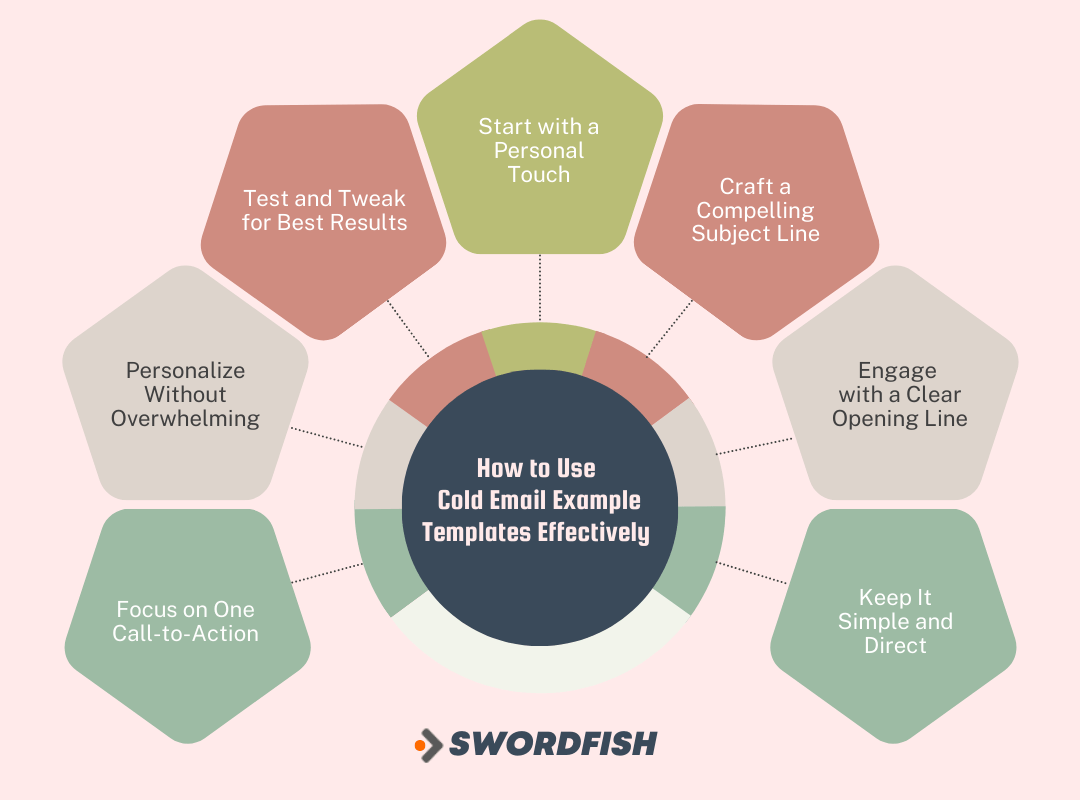
Sending cold emails can be a powerful way to reach potential leads and boost sales. To help you succeed, we’ve put together some easy-to-use templates. Before that, we’ll discuss how to effectively apply these templates without resorting to jargon or complicated techniques.
Start with a Personal Touch
When using a cold email template for b2b, it’s crucial to personalize it for each recipient. Mention their name, their company, or a recent achievement. This small effort shows that you’ve taken the time to understand them.
Craft a Compelling Subject Line
Your subject line is the first thing recipients see. Avoid generic lines and opt for something specific and intriguing. For example, you could reference a recent event or a shared interest.
Engage with a Clear Opening Line
The opening sentence should build on the subject line’s promise. Make it about them, not you. Address a problem they might have and hint at how your solution can help.
Keep It Simple and Direct
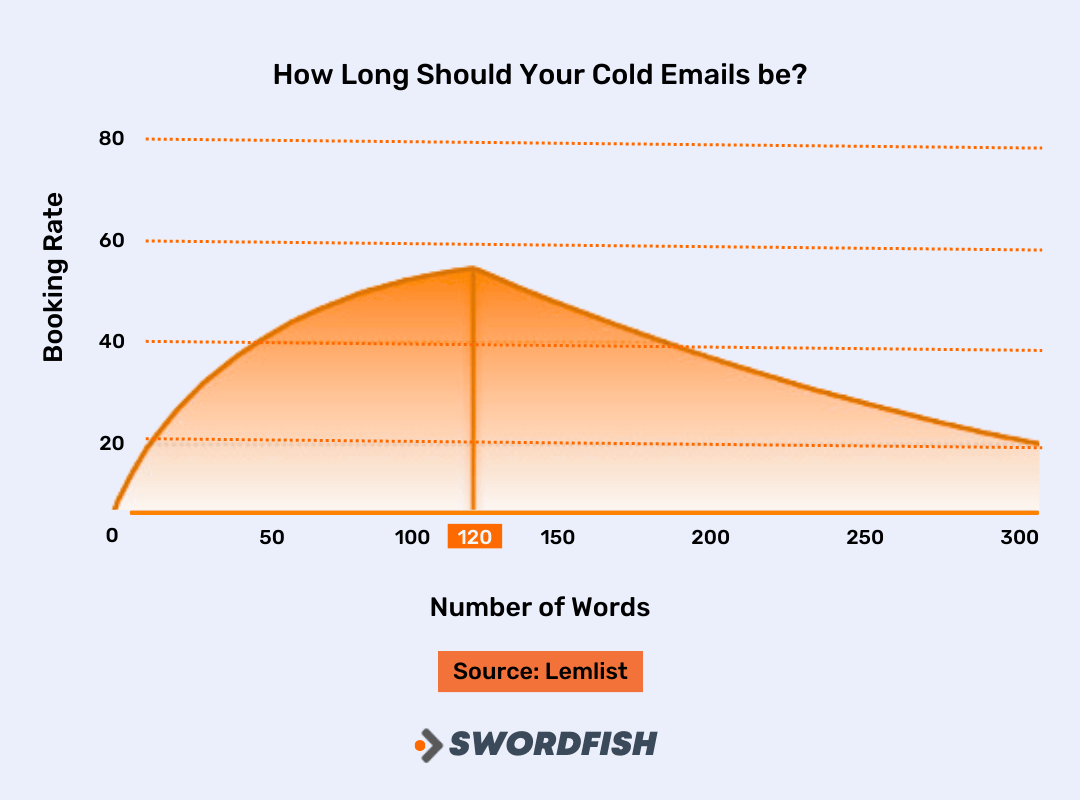
When crafting the main body of your email, be clear and concise. Explain how your product or service can benefit them. Use plain language, avoiding any unnecessary jargon.
It has been experimented with and seen that 120 words in cold emails are most effective in getting a response.
Focus on One Call-to-Action
Limit your email to one clear call-to-action. Whether it’s scheduling a demo or downloading a resource, keep it straightforward. Too many choices can overwhelm the recipient.
Personalize Without Overwhelming
While personalization is key, you don’t need to spend hours researching each recipient. A quick look at their LinkedIn profile or recent achievements can provide enough insight for a meaningful connection.
Test and Tweak for Best Results
Not all templates will work the same for every audience. Experiment with different approaches and monitor your results. This way, you can refine your approach for better success rates.
12 Best Cold Email Templates to Generate More Leads
Cold email examples for businesses are important in cold email outreach because they provide a structured framework to craft effective messages. They help save time and ensure consistency in your communication.
Templates also serve as a starting point, allowing you to customize messages for specific recipients while maintaining a clear and persuasive message. This ensures that your emails are well-organized, professional, and have a higher chance of generating leads.
1. Personalized Event Acknowledgement
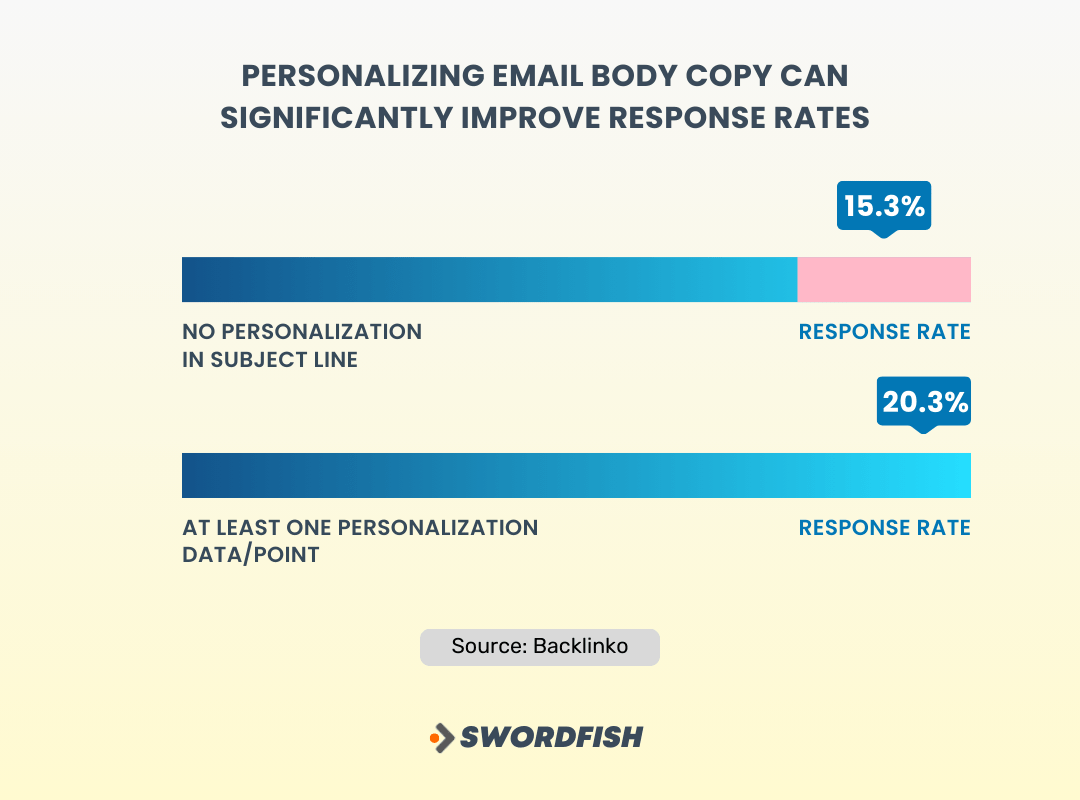
Personalized Event Acknowledgement means recognizing and mentioning a recent event or achievement related to the recipient in your cold email. This could be anything from a promotion, an award, a milestone, or even a recent publication. A touch of personalization increases the chances of a response by almost 5%.
For example, if you find out that the recipient recently won an industry award, you can use this information to make your email more relevant and engaging.
Example Template
Subject: Congratulations on Your Recent Achievement!
Hi [Recipient’s Name],
I hope this message finds you well. I wanted to take a moment to extend my heartfelt congratulations on your recent [mention the specific achievement, e.g., award, promotion, milestone]. It’s truly impressive and a testament to your hard work and dedication.
I came across the news and couldn’t help but reach out to someone who is making such significant strides in [mention relevant field or industry]. Your accomplishments are inspiring, and I’m eager to learn more about how you’re driving success.
If you have a moment to spare, I’d love to connect and hear more about your journey. Perhaps we could schedule a brief call next week? Please let me know a time that works for you, or feel free to share your availability.
Once again, congratulations on this fantastic achievement, [Recipient’s Name]. I look forward to the possibility of connecting soon.
Warm regards,
[Your Name]
[Your Position]
[Your Company]
Takeaway
In this email, we’re acknowledging the recipient’s recent achievement and expressing genuine admiration. It’s important to show sincere interest and offer a potential next step, which in this case is suggesting a call.
Remember to personalize further based on specific details you gather about the recipient.
2. Attention-Interest-Desire-Action (AIDA)
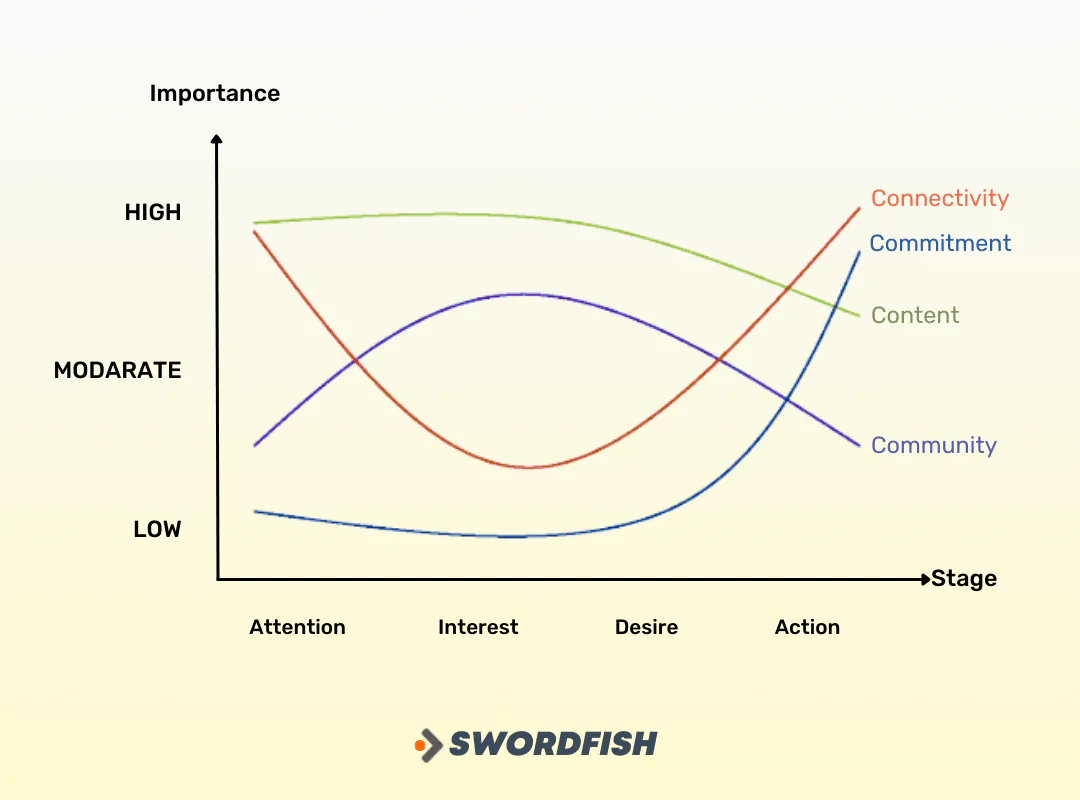
Attention-Interest-Desire-Action (AIDA) is a proven copywriting formula that outlines the key components to include in your cold email. It stands for:
- Attention: Grab the recipient’s attention with an engaging opening line or subject.
- Interest: Generate interest by explaining why your message is relevant and valuable to them.
- Desire: Build desire by highlighting the benefits and value of your offer.
- Action: Encourage the recipient to take a specific action, such as replying to the email, scheduling a call, or visiting a website.
Example Template
Subject: Transform Your [Specific Challenge] with [Your Solution]
Hi [Recipient’s Name],
Are you struggling with [specific challenge]? We understand how [challenge] can be frustrating and time-consuming.
Our [Your Solution] is designed to make your life easier. With features like [highlight key features or benefits], you’ll be able to [specific outcomes or benefits].
Imagine [describe positive outcome], all with just a few clicks. It’s that simple!
Ready to take the first step towards a more streamlined and efficient [process/operation]? Reply to this email or click [link to a landing page] to learn more.
Looking forward to helping you [achieve specific benefits],
[Your Name]
[Your Position]
[Your Company]
Takeaway
In this email, we follow the AIDA formula:
- Attention: Addressing a common pain point or challenge.
- Interest: Introducing the solution and highlighting its benefits.
- Desire: Painting a picture of the positive outcomes they can expect.
- Action: Encourage them to reply or click a link to learn more.
3. Direct Value Proposition
A Direct Value Proposition in a cold email refers to clearly and directly stating the value or benefit that the recipient will gain from your product or service. It’s about getting straight to the point and letting them know why they should be interested.
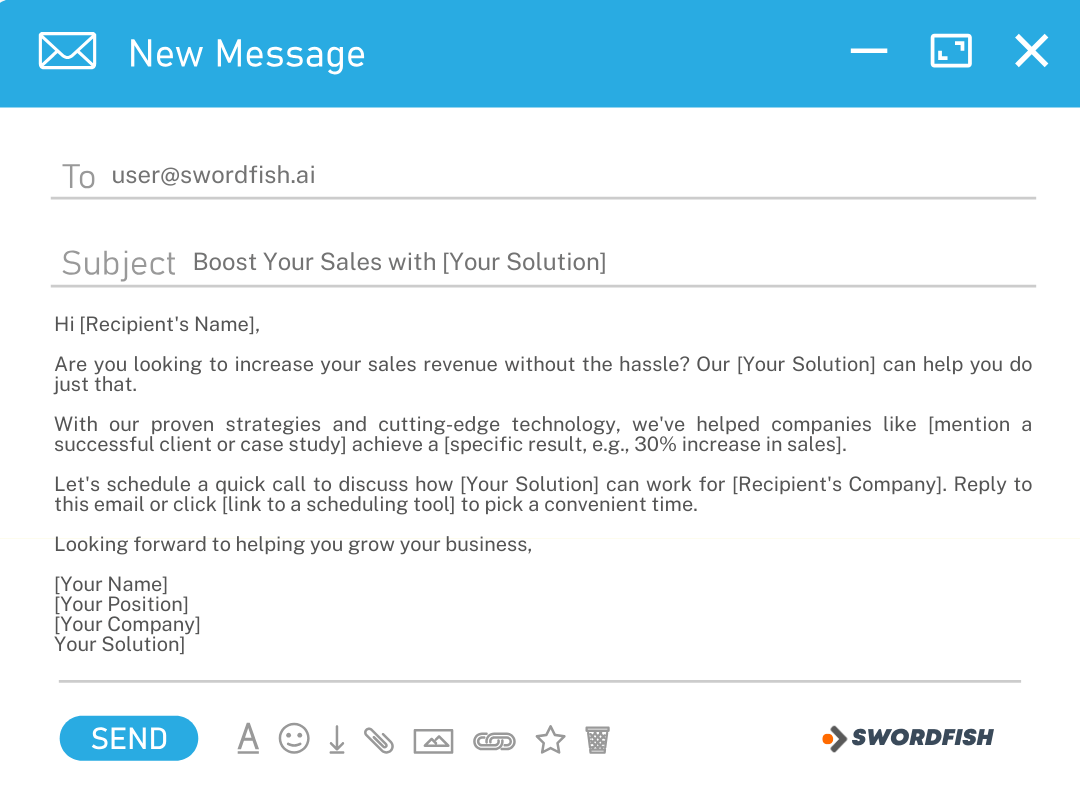
Example Template
Subject: Boost Your Sales with [Your Solution]
Hi [Recipient’s Name],
Are you looking to increase your sales revenue without the hassle? Our [Your Solution] can help you do just that.
With our proven strategies and cutting-edge technology, we’ve helped companies like [mention a successful client or case study] achieve a [specific result, e.g., 30% increase in sales].
Let’s schedule a quick call to discuss how [Your Solution] can work for [Recipient’s Company]. Reply to this email or click [link to a scheduling tool] to pick a convenient time.
Looking forward to helping you grow your business,
[Your Name]
[Your Position]
[Your Company]
Takeaway
In this example, the direct value proposition is clear:
The recipient can boost their sales with the help of the sender’s solution. The email then provides a brief testimonial and invites the recipient to take action.
4. Three-Sentence Introduction
A Three-Sentence Introduction in a cold email is a concise and impactful way to introduce yourself and your offer to the recipient. It’s a brief but effective way to grab their attention and provide them with relevant information.
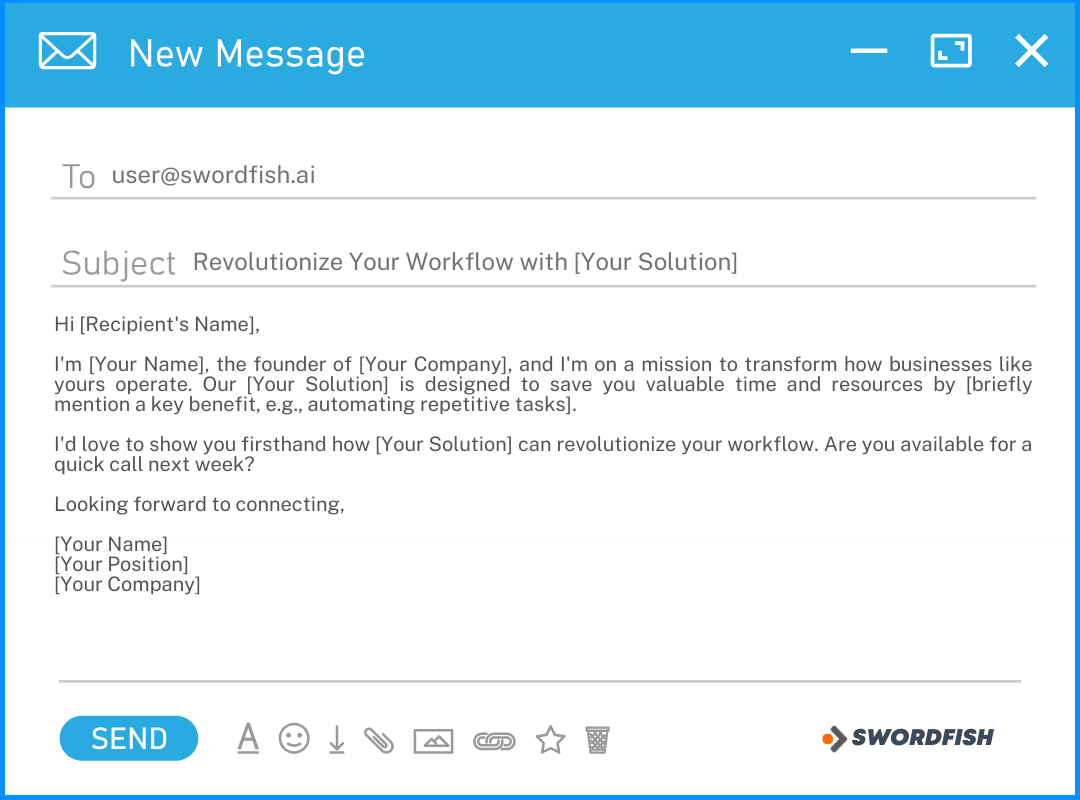
Example Template:
Subject: Revolutionize Your Workflow with [Your Solution]
Hi [Recipient’s Name],
I’m [Your Name], the founder of [Your Company], and I’m on a mission to transform how businesses like yours operate. Our [Your Solution] is designed to save you valuable time and resources by [briefly mention a key benefit, e.g., automating repetitive tasks].
I’d love to show you firsthand how [Your Solution] can revolutionize your workflow. Are you available for a quick call next week?
Looking forward to connecting,
[Your Name]
[Your Position]
[Your Company]
Takeaway
In this example, the three-sentence introduction clearly states who the sender is, what they offer, and a key benefit of their solution. It then invites the recipient to take the next step by scheduling a call.
5. Request for Introduction
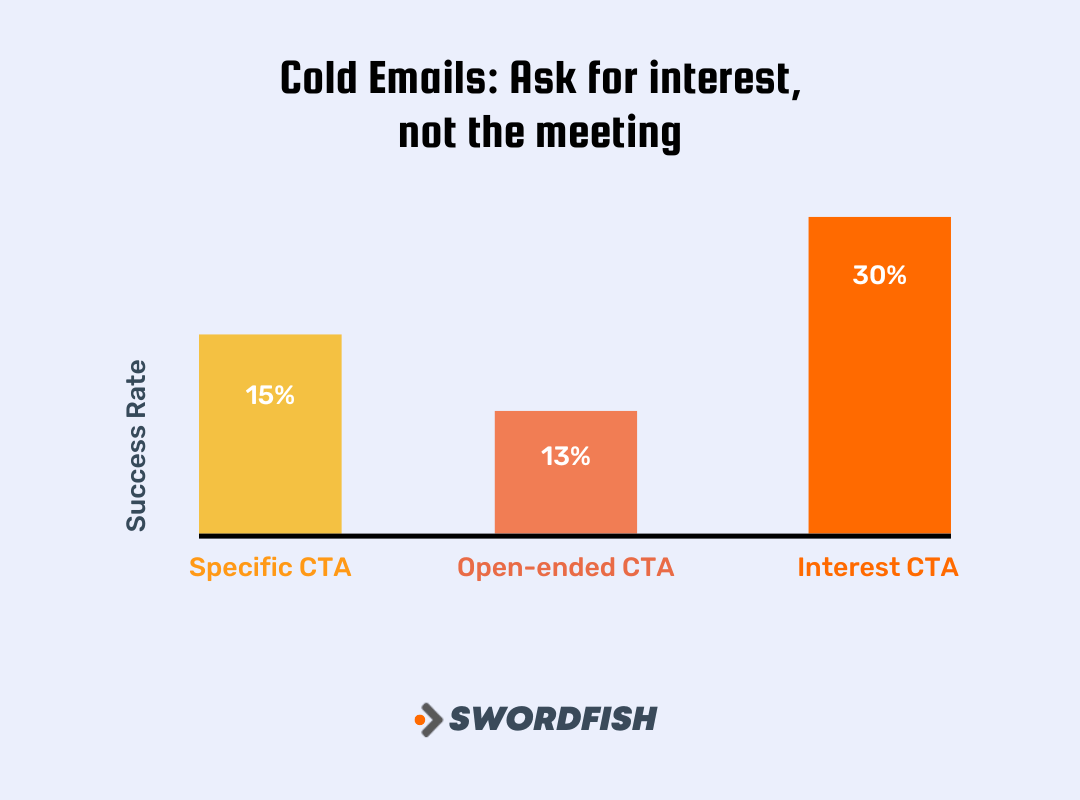
In a cold email, a “Request for Introduction” is a courteous method of seeking the recipient’s help in making a connection with someone else in their network. This tactic is used to broaden your professional connections and reach potential leads or collaborators.
Example Template
Subject: Introduction to [Desired Contact’s Name] at [Their Company]
Hi [Recipient’s Name],
I hope this message finds you well. I’m writing to you because I’ve been following the impressive work of [Desired Contact’s Name] at [Their Company], and I’m eager to connect with them. I noticed that you’re connected with them on LinkedIn, and I was wondering if you might be open to introducing us.
I believe there could be valuable opportunities for collaboration between our companies, and I’d greatly appreciate the chance to explore this further with [Desired Contact’s Name]. If you’re comfortable with it, I can provide a brief introduction message for your consideration.
Thank you for considering my request, [Recipient’s Name]. I look forward to hearing from you.
Warm regards,
[Your Name]
[Your Position]
[Your Company]
Takeaway
In this example, the email is polite, respectful, and clearly states the purpose of the request. It also emphasizes the potential benefits of the introduction for both parties.
6. Before-After-Bridge (BAB) Technique
The Before-After-Bridge (BAB) technique is a storytelling framework often used in sales and marketing to engage and persuade the audience. It’s designed to address a problem, agitate the pain associated with it, and then provide a solution.
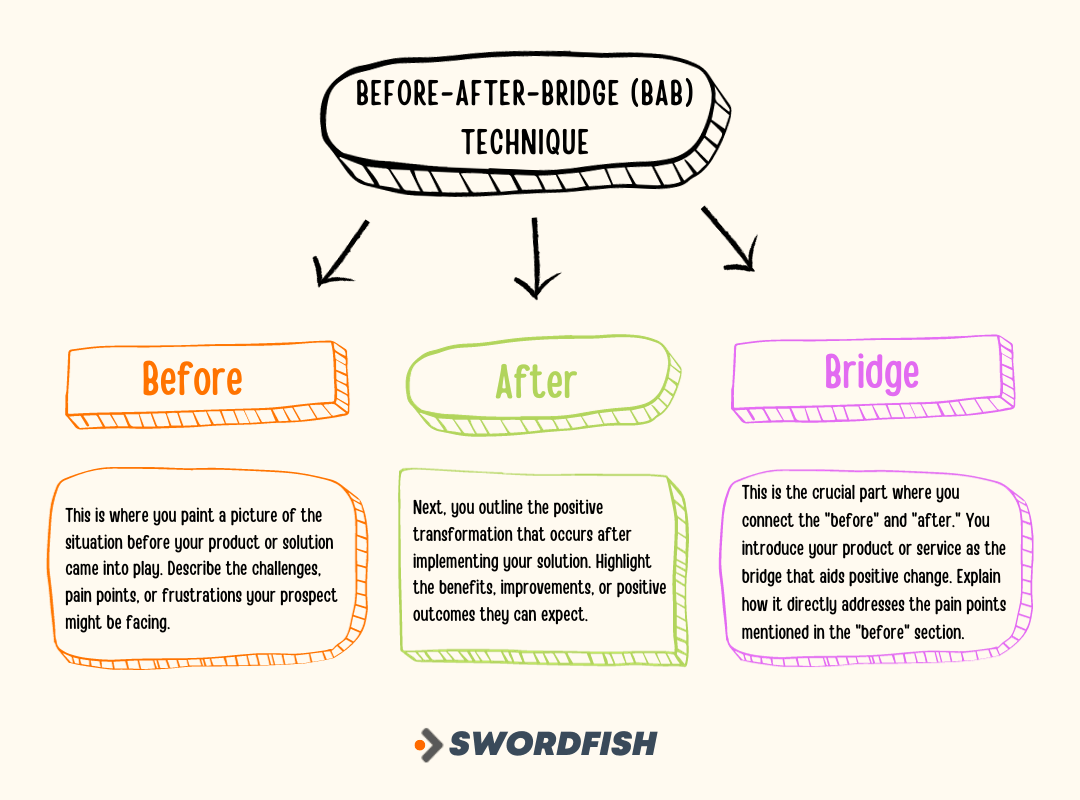
- Before: This is where you paint a picture of the situation before your product or solution came into play. Describe the challenges, pain points, or frustrations your prospect might be facing.
- After: Next, you outline the positive transformation that occurs after implementing your solution. Highlight the benefits, improvements, or positive outcomes they can expect.
- Bridge: This is the crucial part where you connect the “before” and “after.” You introduce your product or service as the bridge that aids positive change. Explain how it directly addresses the pain points mentioned in the “before” section.
Example Template
Subject: Streamline Your Workflow with [Your Solution]
Hi [Prospect’s Name],
Before discovering [Your Solution], many [industry/role-specific pain points] were causing headaches for professionals like you. The struggle to [specific challenge] and [additional pain point] likely took up valuable time and energy.
Imagine a scenario where these hurdles are a thing of the past. With [Your Solution], you can experience a seamless workflow, eliminating [mentioned challenges]. This means more time for high-impact tasks and less frustration in your day-to-day operations.
Our [product/service] acts as the bridge between your current challenges and the optimized workflow you deserve. It’s designed to [highlight key features/benefits] tailored to professionals in your industry.
I’d be happy to provide more information or schedule a quick call to discuss how [Your Solution] can make a meaningful difference for you. Just let me know a time that works for you, or feel free to book a slot in my calendar [include calendar link].
Looking forward to potentially revolutionizing your workflow!
Best regards,
[Your Name]
[Your Position]
[Your Company]
Takeaway
In this example, the email effectively applies the Before-After-Bridge technique to demonstrate the value of the offered solution. It resonates with the recipient by addressing their specific pain points and presenting a clear path to a better outcome.
7. Mention Competitor’s Product
Mentioning a competitor’s product in a cold email can be an effective way to grab the recipient’s attention and highlight how your product or service offers unique advantages. Here’s an explanation, followed by an example of a cold email using this approach:
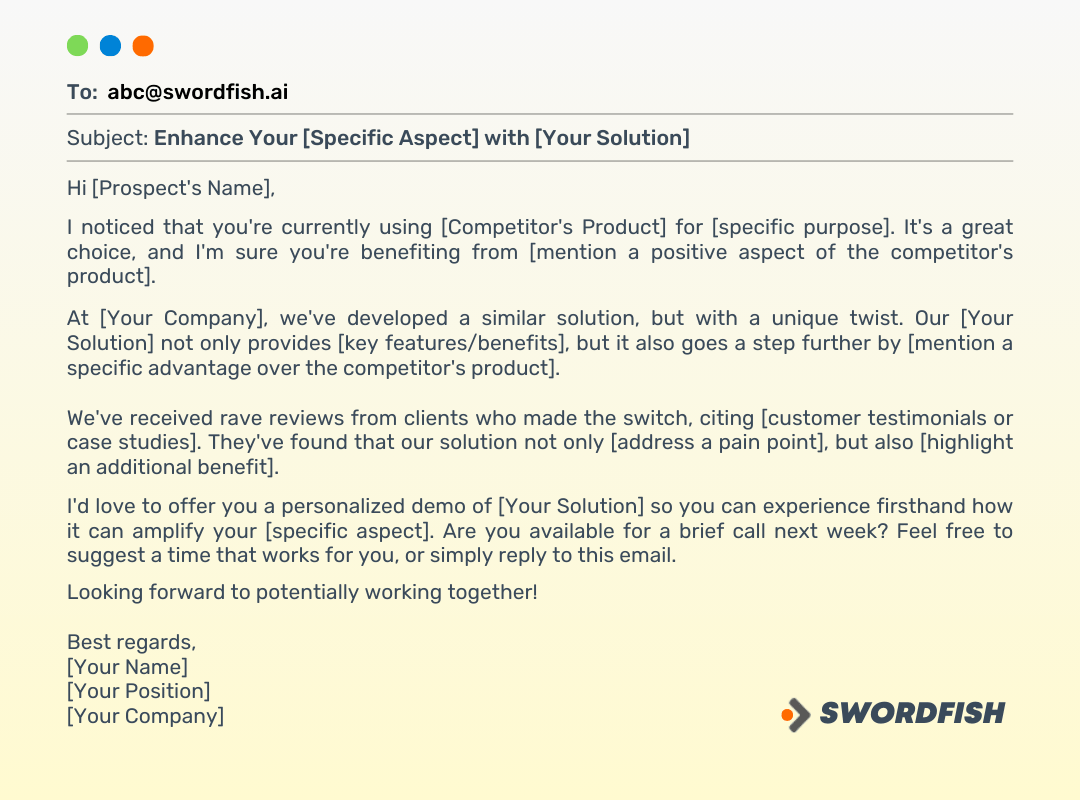
In this approach, you acknowledge that the recipient is currently using a product or service offered by one of your competitors. You then proceed to highlight the key differentiators or benefits of your own offering.
This technique works best when you can clearly demonstrate how your product provides added value or addresses pain points that the competitor’s product may not.
Example Template
Subject: Enhance Your [Specific Aspect] with [Your Solution]
Hi [Prospect’s Name],
I noticed that you’re currently using [Competitor’s Product] for [specific purpose]. It’s a great choice, and I’m sure you’re benefiting from [mention a positive aspect of the competitor’s product].
At [Your Company], we’ve developed a similar solution, but with a unique twist. Our [Your Solution] not only provides [key features/benefits], but it also goes a step further by [mentioning a specific advantage over the competitor’s product].
We’ve received rave reviews from clients who made the switch, citing [customer testimonials or case studies]. They’ve found that our solution not only [address a pain point], but also [highlight an additional benefit].
I’d love to offer you a personalized demo of [Your Solution] so you can experience firsthand how it can amplify your [specific aspect]. Are you available for a brief call next week? Feel free to suggest a time that works for you, or simply reply to this email.
Looking forward to potentially working together!
Best regards,
[Your Name]
[Your Position]
[Your Company]
Takeaway
In this example, the email acknowledges the recipient’s use of a competitor’s product and validates their choice. It then introduces the sender’s own solution, emphasizing its unique strengths and benefits.
Providing evidence of customer satisfaction through testimonials or case studies adds credibility to the pitch. Finally, the email invites the recipient to explore the new solution through the given personalized cold email example.
8. Problem-Agitate-Solution (PAS)
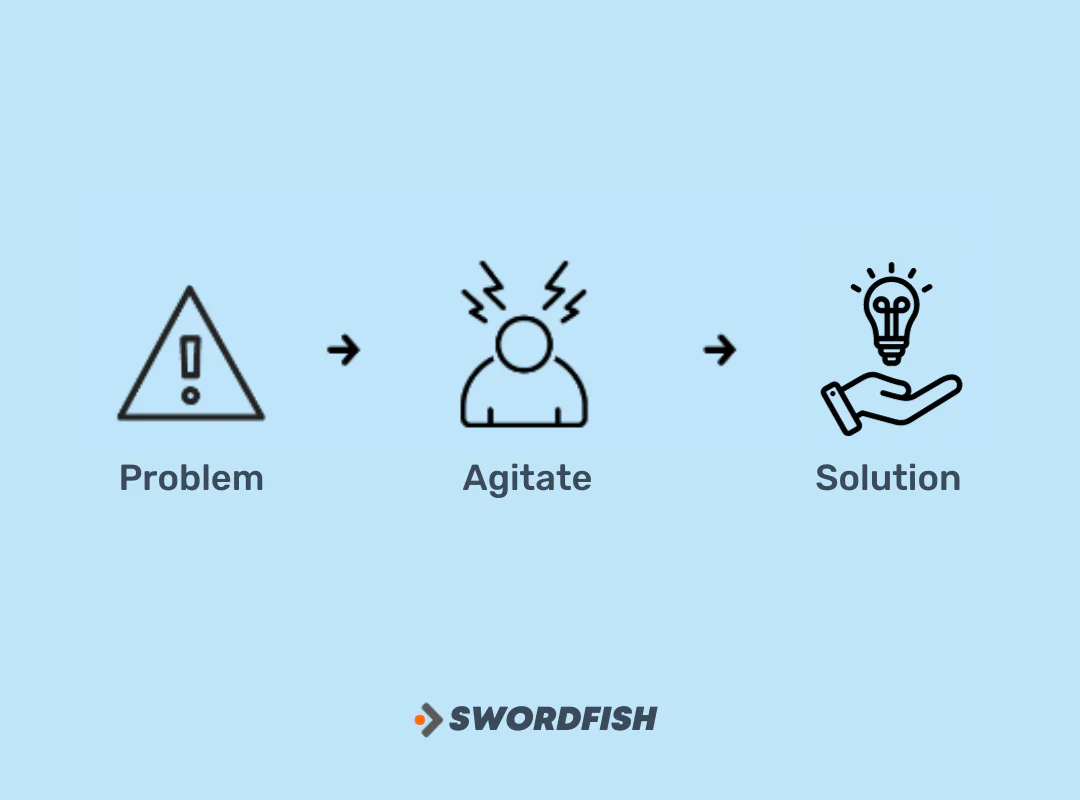
The Problem-Agitate-Solution (PAS) technique is a powerful approach to crafting cold emails that effectively address a pain point or challenge faced by the recipient. Here’s an explanation followed by an example of a cold email using this approach:
The PAS technique begins by identifying a specific problem or pain point that the recipient may be experiencing. The email then agitates this issue by highlighting the negative consequences or challenges associated with it.
Finally, the email presents the sender’s product or service as the solution to alleviate the identified problem.
Example Template
Subject: Streamline Your [Specific Process] with [Your Solution]
Hi [Prospect’s Name],
Are you tired of [specific problem or pain point related to the recipient’s industry or role]? We understand how frustrating it can be to [agitate the issue]. It not only hinders productivity, but it also [mention additional negative consequences].
At [Your Company], we’ve developed a solution that’s tailored to address precisely this challenge. Our [Your Solution] is designed to [mention key benefits that directly counter the identified problem]. By implementing [Your Solution], you’ll experience a significant improvement in [specific outcomes or results].
We’ve had the privilege of helping [mention successful clients or case studies] overcome similar hurdles and achieve remarkable results. They’ve found that [specific testimonials or statistics illustrating the impact of Your Solution].
I’d love to schedule a time for a personalized demo of [Your Solution] so you can witness firsthand how it can revolutionize your [specific process]. Are you available for a brief call next week? Feel free to suggest a time that works for you, or simply reply to this email.
Looking forward to the possibility of working together!
Warm regards,
[Your Name]
[Your Position]
[Your Company]
Takeaway
In this example, the email starts by addressing a pain point relevant to the recipient’s industry or role. It then amplifies the issue by emphasizing the negative consequences and challenges associated with it.
The email then introduces the sender’s solution, emphasizing how it directly addresses and resolves the identified problem.
Providing evidence of past successes through testimonials or case studies adds credibility to the pitch. Finally, the email invites the recipient to explore the solution further through a personalized demo or call.
9. Clarifying the Right Contact
This is a technique that involves sending a cold email to confirm or identify the correct person within a company who is responsible for making decisions or handling specific matters related to your product or service.
When you’re uncertain about the right point of contact within an organization, you can send an email to an individual who seems like the potential right contact from your research.
The email should be polite, inquiring if they are indeed the person you should be talking to or if they can point you to the appropriate individual.
Example Template
Subject: Inquiry About the Right Contact at [Company Name]
Hi [Prospect’s Name],
I hope this email finds you well. My name is [Your Name], and I’m reaching out to [Your Company]. I’ve been conducting some research on [Company Name] and am interested in discussing how our [Product/Service] could potentially benefit your organization.
However, I want to ensure I’m connecting with the right person who handles [specific area related to your product/service]. If I’m mistaken and you’re not the appropriate contact, could you kindly direct me to the person in charge of [specific area]?
I greatly appreciate your assistance, and I apologize for any inconvenience caused by this inquiry. Your guidance will be invaluable in helping us connect with the right individual.
Thank you for your time, [Prospect’s Name]. I look forward to potentially connecting with you or the designated contact person.
Warm regards,
[Your Name]
[Your Position]
[Your Company]
Takeaway
In this example, the email begins with a polite introduction and a brief explanation of the purpose of reaching out. It then goes on to express the intention of finding the correct contact person within the company.
If the recipient is not the right person, the email kindly asks for guidance in identifying the appropriate individual. This approach demonstrates professionalism and respect for the recipient’s time and responsibilities.
10. Praise-Picture-Push (PPP)
The Praise-Picture-Push (PPP) technique is a cold email for b2b strategy that involves starting the email with genuine praise or recognition for something positive related to the recipient or their company.
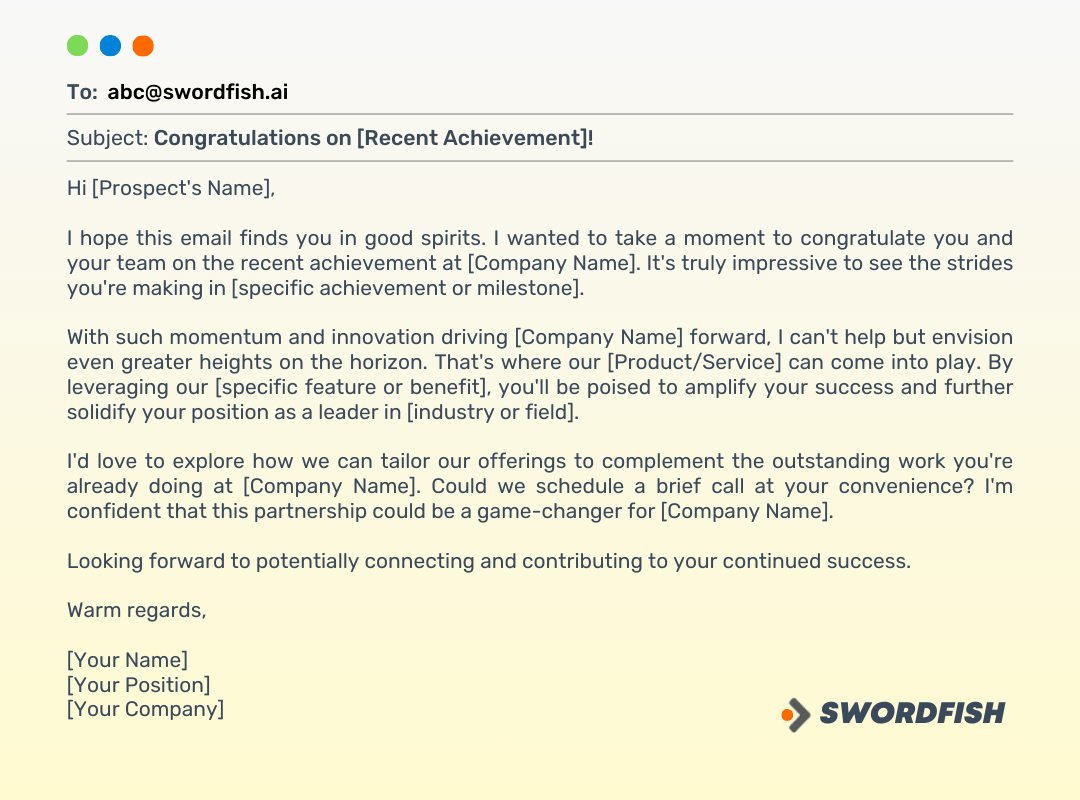
Following the praise, the email transitions into painting a vivid picture of how the recipient could benefit from the product or service being offered. Finally, the email concludes by making a compelling call-to-action or proposal.
Example Template
Subject: Congratulations on [Recent Achievement]!
Hi [Prospect’s Name],
I hope this email finds you in good spirits. I wanted to take a moment to congratulate you and your team on the recent achievement at [Company Name]. It’s truly impressive to see the strides you’re making in [specific achievement or milestone].
With such momentum and innovation driving [Company Name] forward, I can’t help but envision even greater heights on the horizon. That’s where our [Product/Service] can come into play. By leveraging our [specific feature or benefit], you’ll be poised to amplify your success and further solidify your position as a leader in [industry or field].
I’d love to explore how we can tailor our offerings to complement the outstanding work you’re already doing at [Company Name]. Could we schedule a brief call at your convenience? I’m confident that this partnership could be a game-changer for [Company Name].
Looking forward to potentially connecting and contributing to your continued success.
Warm regards,
[Your Name]
[Your Position]
[Your Company]
Takeaway
In this example, the email starts with a genuine congratulatory message, recognizing the recipient’s recent achievement. It then smoothly transitions into painting a picture of how the recipient’s success can be further amplified with the use of the sender’s product or service.
Finally, the email closes with a specific call-to-action, suggesting a call to explore the potential partnership. This approach combines praise, visualization, and a clear proposal to engage the recipient effectively.
11. Website Interaction Follow-up
The Website Interaction Follow-up is a cold email strategy that involves reaching out to a prospect who has previously interacted with your website, such as visiting a specific page or downloading content.
This type of email acknowledges the prospect’s previous engagement and aims to continue the conversation or provide additional value based on their demonstrated interest.
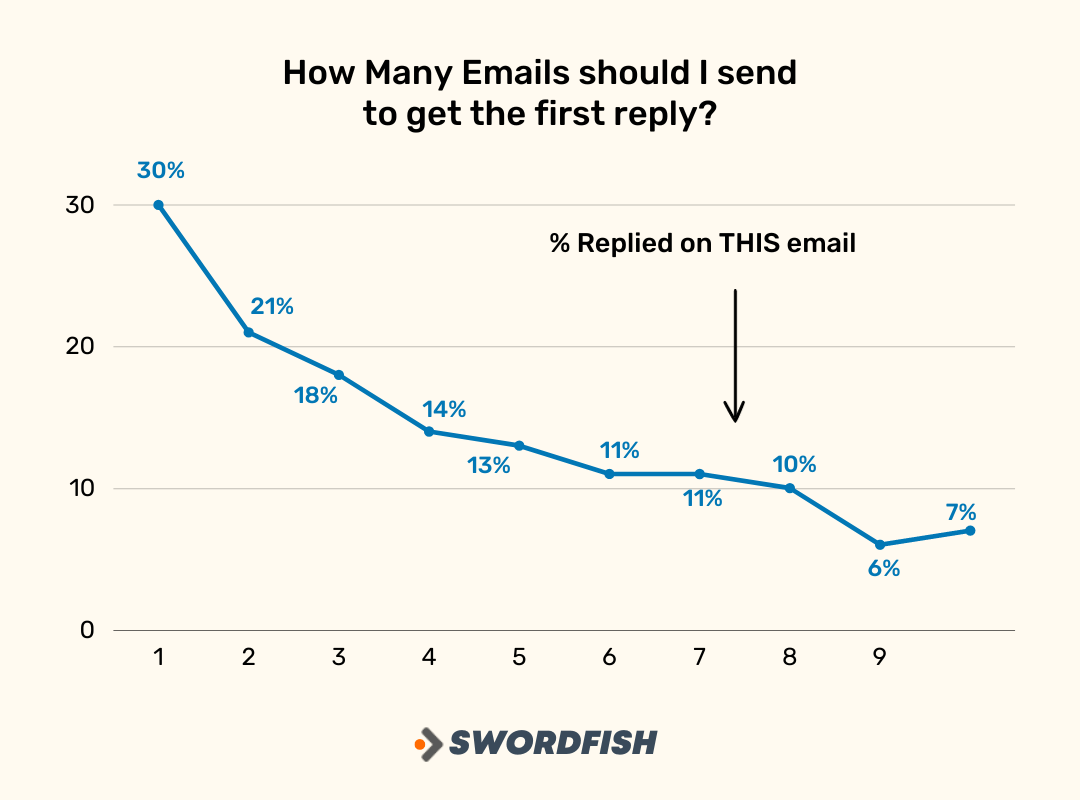
Based on data from Yesware, if your first email doesn’t receive a reply, you still have a 21% chance of getting a response to your second one. And if that doesn’t do the trick, don’t lose hope – there’s still a 25% chance that you’ll eventually hear back from the recipient. Keep persisting!
Example Template
Subject: [Specific Page/Content] – Further Insights
Hi [Prospect’s Name],
I hope this email finds you well. I noticed that you recently visited our [specific page/content] on our website. I wanted to take a moment to thank you for showing interest in [topic/product/service].
Since you’ve expressed interest in [topic], I thought you might find additional resources valuable. I’ve included a couple of articles below that delve deeper into [related topic]. Feel free to explore them at your convenience:
[Link to Resource 1]
[Link to Resource 2]
If you have any questions or would like further information, please don’t hesitate to reach out. I’d be more than happy to provide any assistance you may need.
Thank you again for your interest, and I look forward to the possibility of connecting further.
Warm regards,
[Your Name]
[Your Position]
[Your Company]
Takeaway
In this example, the email starts by acknowledging the prospect’s previous interaction with the website. It expresses gratitude for their interest in the specific topic. The email then provides additional resources related to the topic to offer further value.
Finally, it encourages the prospect to reach out for any additional information or assistance they may require. This approach aims to nurture the prospect’s interest and create a positive impression.
12. Share Relevant Resource
The “Share Relevant Resource” cold email approach involves providing a prospect with a valuable and highly relevant resource, such as a blog post, eBook, or industry report. This strategy aims to establish your credibility and expertise in a specific area while providing immediate value to the prospect.
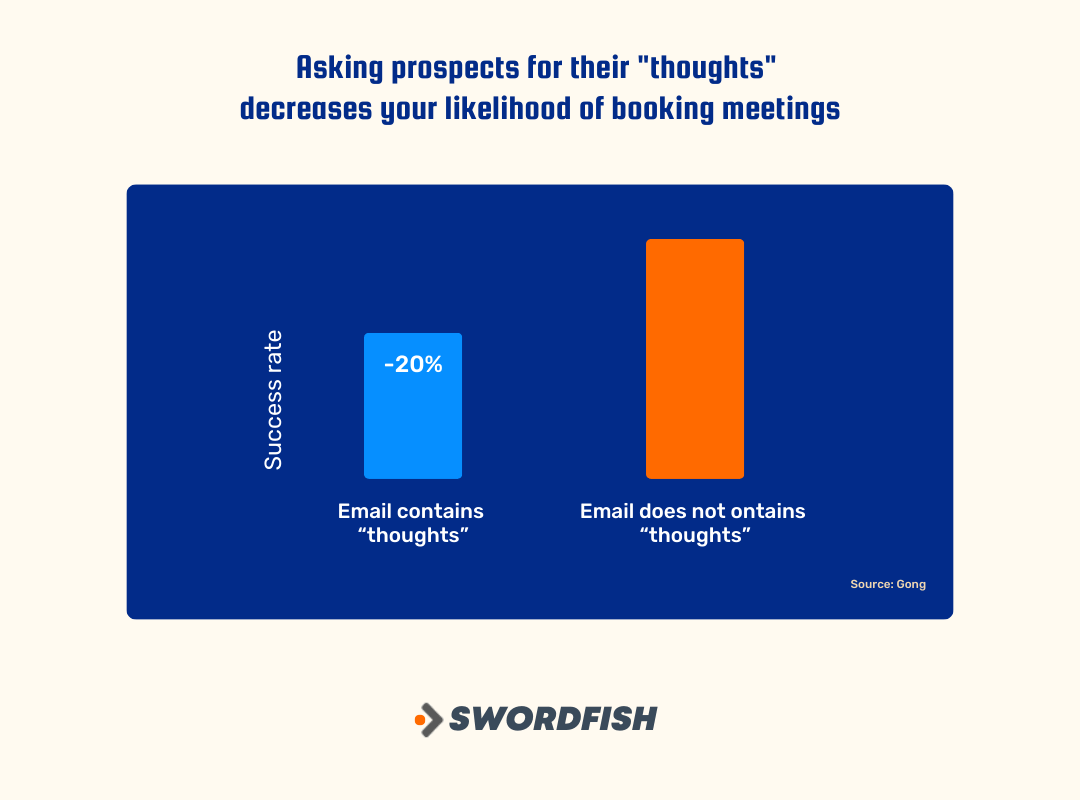
A study by Gong, a revenue intelligence platform, found that “interest CTAs” have a 30% success rate, double that of other CTAs. Conversely, asking for “thoughts” decreases conversion chances by 20%.
Example Template
Subject: Valuable Resource for [Specific Topic]
Hi [Prospect’s Name],
I hope this message finds you well. I wanted to share a resource that I believe could be extremely valuable to you and your team, especially in the context of [specific topic or pain point].
I recently came across this insightful article titled “[Title of Resource]” written by [Author/Source]. It provides in-depth insights and practical strategies for [relevant topics]. I found it particularly relevant given your industry expertise in [mention industry or field].
Here’s the link to the article: [Insert Link]
I trust you’ll find it as beneficial as I did. If you have any thoughts or questions after reading it, I’d be eager to hear your perspective.Wishing you a productive day ahead!
Warm regards,
[Your Name]
[Your Position]
[Your Company]
Takeaway
In this example, the email begins with a friendly greeting and an introduction to the purpose of the message. It then introduces the relevant resource, explaining why it’s valuable and how it pertains to the prospect’s area of interest or expertise.
The email includes a direct link to the resource for easy access. Finally, it invites the prospect to share their thoughts or questions after reviewing the content. This approach aims to provide immediate value and position you as a helpful resource for the prospect.
Best Practices for Cold Email Outreach
Cold email outreach can be a powerful tool for connecting with potential leads and driving sales. To help you navigate this process, we’ve outlined some practical tips that steer clear of jargon and complex methods.
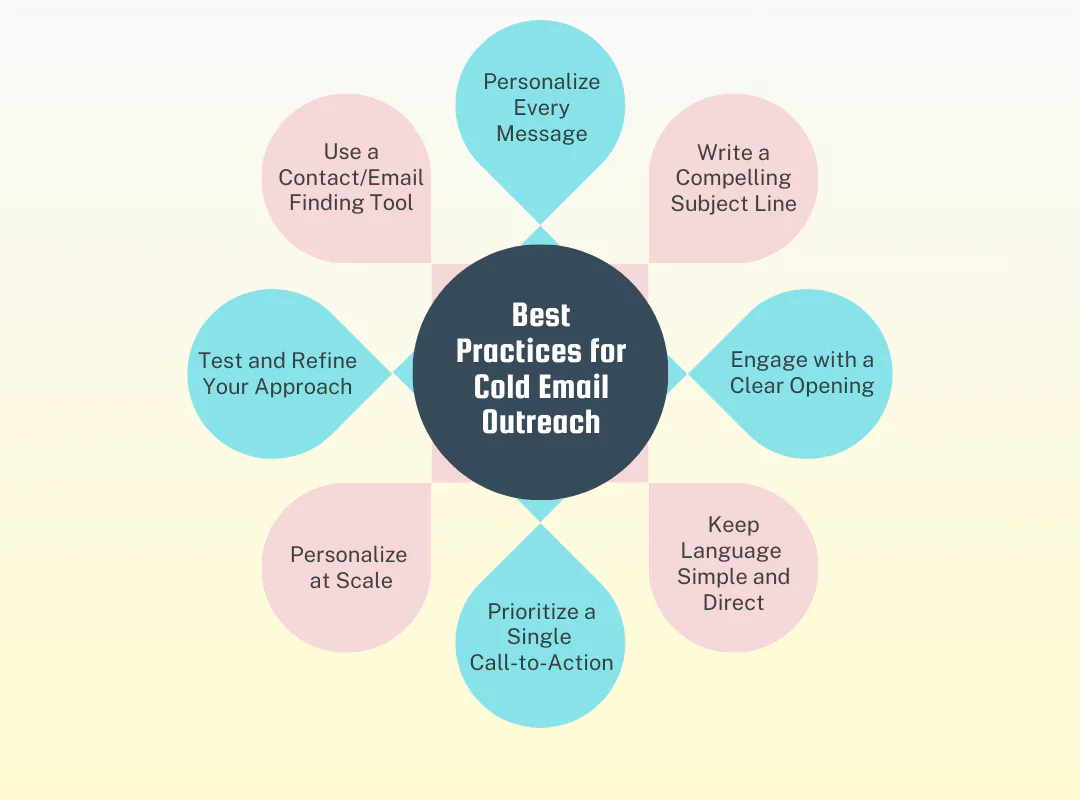
In this guide, we’ll share straightforward best practices for achieving success in your cold email campaigns.
Personalize Every Message
Ensure that each cold email feels tailored to the recipient. Include their name, company, or a recent accomplishment to demonstrate genuine interest and consideration.
Write a Compelling Subject Line
Grab your recipient’s attention with a subject line that is specific, relevant, and engaging. Avoid generic or overused phrases to stand out in their inbox.
Backlinko suggests that a large percentage of outreach messages go unanswered, with just 8.5% of them eliciting a response. With that in mind, outreach emails featuring lengthy subject lines enjoy a 24.6% higher average response rate in comparison to those with shorter subject lines.
Engage with a Clear Opening
The opening sentence should build upon the subject line’s promise and immediately resonate with the recipient. Focus on addressing their needs or pain points.
Keep Language Simple and Direct
Communicate your message clearly and concisely. Avoid using complex terminology or industry jargon that might confuse or alienate your audience.
Prioritize a Single Call-to-Action
Guide your recipient towards one clear action, whether it’s scheduling a call, downloading a resource, or visiting a webpage. Too many options can lead to decision fatigue.
Personalize at Scale
While individualized messages are essential, you can still personalize them efficiently. Spend a few minutes reviewing a recipient’s profile for key insights that can inform your approach.
Test and Refine Your Approach
Experiment with different templates and approaches to see what resonates best with your target audience. Continuously track your results and make adjustments accordingly.
How Swordfish Can Help You With Cold Emailing?
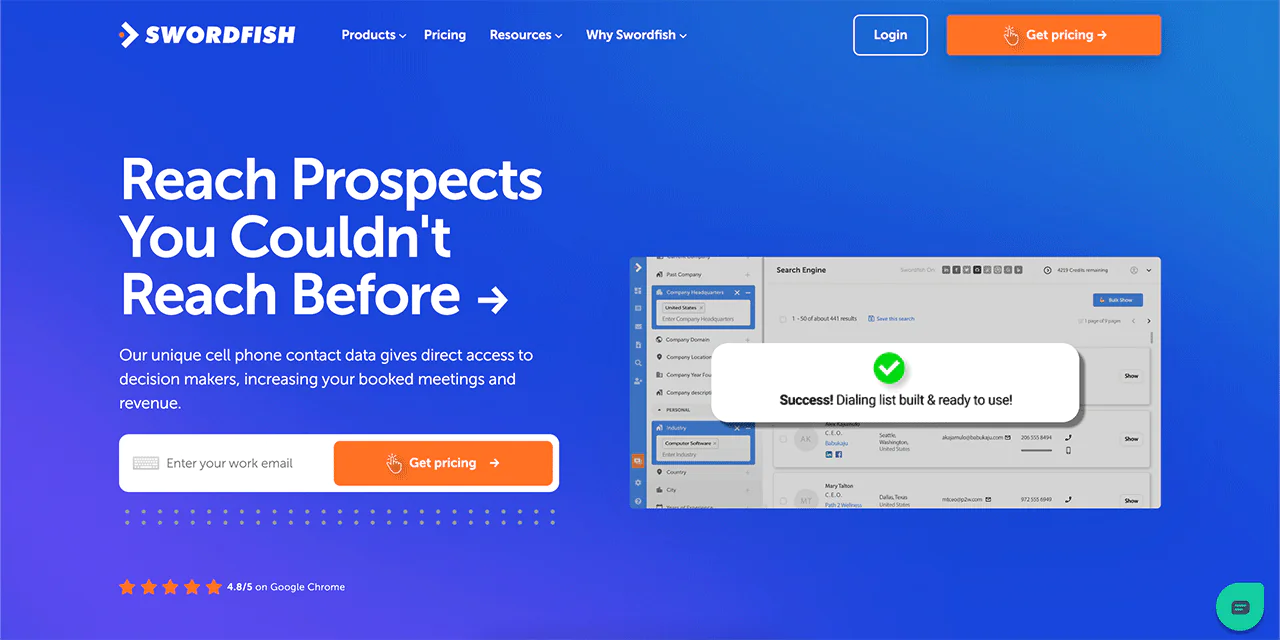
Wondering how you’ll put these cold email examples to work in 2023?
Here’s a pro tip before you kick off your cold email outreach campaign: Ensure you have the right B2B lead generation and sales prospecting tool in hand.
This tool should help you find precise contact details like email addresses, direct dial phone numbers, and even mobile numbers of the decision-makers you’re targeting.
Swordfish’s prospector helps you fuel your sales pipeline in bulk. You can also create email lists in seconds with advanced filters and suppression for accurate lead generation.
Consider giving Swordfish AI a try. It offers the most reliable B2B and B2C contact information, including executive, managerial, and key decision-maker email addresses and cell phone numbers. Get started with Swordfish AI today!
Conclusion
To conclude our look at cold email examples, it’s obvious that utilizing well-crafted cold email templates can greatly enhance your outreach initiatives. These templates provide a foundational structure, ensuring your messages are impactful and well-received.
Remember, though, it’s not just about copying and pasting. Take the time to personalize and tailor each email to your specific audience and offering.
By following best practices like crafting compelling subject lines, keeping your body copy focused and benefit-driven, and incorporating personalized touches, you’ll be well on your way to creating impactful cold emails.
And always, ensure that your outreach complies with privacy regulations and respects your recipients’ preferences.
So, with these cold email examples and your unique value proposition in hand, you’re set to go. Maintain authenticity in your conversations, offer value, and don’t let initial non-responses deter you.
FAQs
How do I ensure my cold emails comply with privacy regulations like GDPR?
It’s crucial to obtain explicit consent or have a legitimate interest in contacting individuals. Include an opt-out option, provide transparent information about data usage, and ensure secure data handling practices.
Should I include attachments in my cold emails?
It’s generally recommended to avoid attachments in cold emails, as they may trigger spam filters. Instead, provide links to relevant resources or web pages.
How often should I follow up on a cold email if I don’t receive a response?
A common practice is to send 2-3 follow-up emails spaced a few days apart. It’s important to be persistent but not overly aggressive. Customize follow-ups to add value or address specific concerns.

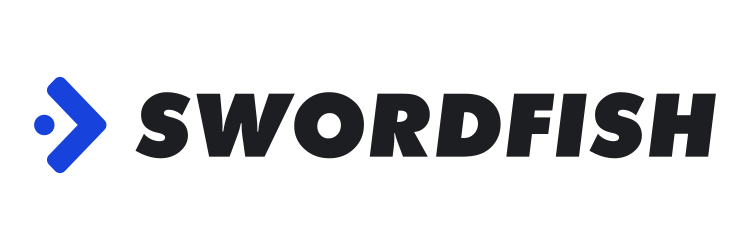
 View Products
View Products


